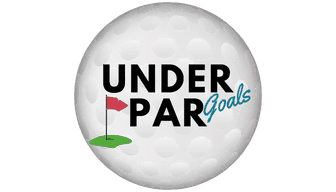No golf set is complete without a pitching wedge. A club that pulls your entire game together, the best pitching wedge can be used off the tee and around the green. How many other clubs can you do that with?
Connecting your irons and wedge together, the best pitching wedge is absolutely essential. But, there are 1000 available when you go to purchase one. We’ve narrowed the options so you don’t have to.
Take a look below and find our top choices, as well as what you should be looking for when picking one out.
Best Overall | Vokey SM8
Titleist does everything well. Just like their putters are Scotty Cameron, their wedges are Vokey, after Bob Vokey. The latest model of their top-notch wedges is the Vokey SM8, our choice for the best overall pitching wedge.
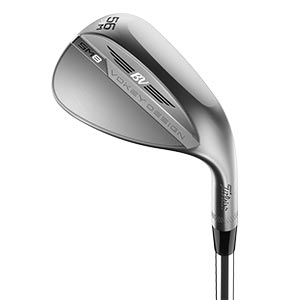
Click below to compare prices and check available lofts…
There is a lot to like about the Vokey SM8, but nothing better than the low center of gravity. When hit correctly, it is easy to hit shots at a reasonable height. What makes the low center of gravity better is the forgiveness it offers. When you blade it, well, you still blade it. However, missing a grove or two low, the ball will still travel as expected. Whereas with other clubs you lose significant distance and trajectory.
Wedges come in various lofts, grinds and bounces. For the best pitching wedge combo, there are fewer choices. While other companies offer too many options, Titleist keeps it simple. There are two lofts, 46 and 48 degrees. There is one grind (F) and one bounce (10). Rather than overcomplicate things, fewer choices means you can worry less about the perfect combination. Instead you can redirect your thoughts to your swing and the inevitable 10-foot birdie putts the SM8 will give you.
If you want to expand beyond the best pitching wedge, there are a lot of variations when it comes to Vokey wedges. To help you out Titleist has a Wedge Selector Tool. I did this prior to a professional club fitting and kept the results in my back pocket. After trying 20 different wedge combos and picking out 3 wedges, I checked my online results. To my surprise, but not the Titleist rep, they were accurate (and I could have avoided the fitting).
Runner-Up | Callaway Jaws MD5
Callaway Jaws MD5 wedges look incredible. They also play incredible and was an easy choice to include as part of our best pitching wedge choices. From the grooves to head shape, every part of this club is designed to promote accuracy around the greens. Whether you’re hitting from 100 out or chipping from a few yards away, the Jaws MD5 improves your game.
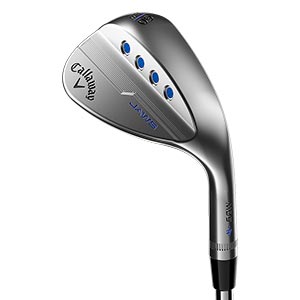
Click below to compare prices and check available lofts…
Not every wedge in the Jaws MD5 line is shaped the same. Unlike older models, Callaway is embracing new technology and analytics to design clubs that best fit the type of shot you will be playing. For the best pitching wedge design, you need to be able to take full shots and half shots.
Their pitching wedge is 46 or 48 degrees, and is the starter club of the Jaws lineup. An optimized head progression means that this club is roughly the size of a standard iron, but with the look of a wedge. As you transition to stronger lofted wedges, the head looks more like your normal sand wedge.
By maintaining that iron-like look and feel, you will have the confidence to take full shots which will trickle down to your other wedges. Keeping with the trend of easy transition to wedges, Callaway keeps a consistent profile above the clubhead. Jaws MD5 irons come with Callaway’s standard shafts and grips.
For High Handicappers | Cleveland CBX 2
High handicap golfers have different needs than golfers that shoot around par. For them, the best pitching wedge is the one with the most forgiveness. In this case, that club the Cleveland CBX 2.
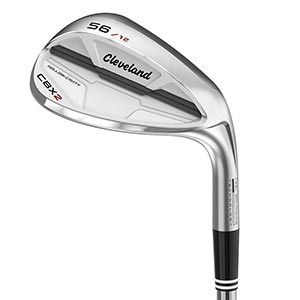
Click below to compare prices and check available lofts…
The Cleveland CBX 2 pitching wedge comes in 46 or 48 degrees, with a V-shaped sole designed for full length shots. As you go on, Cleveland changes the sole shape to optimize performance, but the V-shape is the best choice for a pitching wedge. This shape offers versatility for lengthy shots, but also getting through the rough as you chip.
So how is the Cleveland CBX 2 so forgiving? The answer comes from weighting. CBX 2 wedges have a hollow-cavity design that shifts weight to around the perimeter.
In doing so, it expands the sweet spot. Rather than having to hit the ball square or in the middle of the club you have more room for error. You do not have to be perfect to see good results. All you have to do is take a decent swing and focus on distance control.
For Mid-Handicappers | Mack Daddy CB
For the easiest full swings with a pitching wedge, you want to choose the Callaway Mack Daddy CB. Coming in 46 and 48 degrees, there is not much difference between typical irons and this wedge.
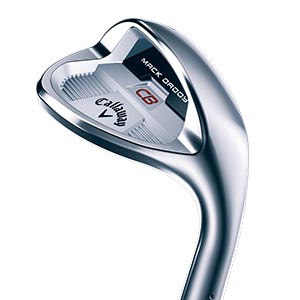
Click below to compare prices and check available lofts…
The sole of Mack Daddy CB wedges is what makes them so easy to hit from every type of surface. Thanks to a full sole, rather than a shaped or reduced design, you will glide through the fairway, rough or sand. Thanks to a strong front flange, it is also harder to blade irons than other choices and keeps weighting to the outside for added forgiveness.
This might be our best pitching wedge choice for mid-handicappers, but we recommend it for anyone that prefers the look of an iron. The Mack Daddy CB is the perfect hybrid of iron and wedge, and is a great transitional choice for anyone up in the air between each design. The only downside is that it will be tougher for skilled golfers to produce the same level of spin as with a wedge design club.
What Loft Is A Pitching Wedge?
A pitching wedge typically has a loft between 44 and 48 degrees. A 44-degree pitching wedge is considered “strong” lofted and a 48-degree wedge is considered “weak”. No matter your loft choice, a pitching wedge is considered a bridge between irons and wedges, bringing together your distance gaps.
A pitching wedge can look like an iron or a wedge. We recommend choosing one that looks like a wedge. The logic of this is simple. Wedges are harder to hit than irons. High-lofted wedges are harder to hit than lesser lofted wedges. The best pitching wedge is easier to hit and helps you get a better feel over these other clubs that are harder to take half and full swings with from the fairway and around the green.
How to Choose the Right Loft
First things first, you need to know what loft your 9-iron is to choose the correct loft for your pitching wedge. This information is readily available on your iron manufacturers website. Even if you have an older set of clubs, you’ll be able to find this info on google if you come up empty elsewhere.
After you have the loft of your 9-iron, you’ll want to go up about 5 degrees. Say it’s 40 degrees. Your best pitching wedge option will be 45 degrees. As a rule, you should never have more than a 6-degree gap between wedges. On the low end, having clubs any closer than 4 degrees is redundant. This 4-6-degree window ensures that you do not have too small or too large of a distance gap for shots demanding the most accuracy.
How to Pick the Best Pitching Wedge if I Already Have a Gap or Sand Wedge?
Plainly said, the best pitching wedge is more important than a gap or sand wedge. You will use your pitching wedge more than either of these other clubs. Regardless, here’s how to pick the best pitching wedge when you already have more lofted clubs behind it.
Look at the loft on the bottom of the club (most wedges have a loft instead of a number). If there is no number, follow the same method in the section above. When you already have a 9-iron and a wedge below pitching, split the difference between the two clubs evenly.
If you plan on replacing the gap or sand wedge, do not bother taking it into consideration. Base your decision off the 9-iron only and worry about the more lofted clubs later.
How to Choose the Rest of Your Wedges
After you have your pitching wedge selected, you have a lot more freedom. Again, you want to stick to the 4-6-degree loft gaps. The difference this time around is that you have an established base with the best pitching wedge for your game already picked out. Depending on the number of clubs already in your bag, you’ll have room for 3 or 4 more clubs to comply with the 14-club maximum rule.
What to Look for When Choosing the Best Pitching Wedge
The best pitching wedge is one you can hit from anywhere. It’s also one that doesn’t hurt you (too badly) when you make poor contact or miss your target. In simpler terms, you need a forgiving pitching wedge.
We are not all scratch golfers. The people we watch on TV are. Those players use custom golf clubs and are not what the average golfer should be purchasing. We go with the brands casual players can trust; Titleist, Callaway, Cleveland.
The offerings by these companies are clubs you can grow with. For a golfer that shoots 100, it helps you to get the club in the air with consistent distance and direction using a large sweet spot. For a single digit handicapper, your pitching wedge is capable of high spin and accuracy.
For shaft, you want to choose something similar to your 9-iron. This will give you a consistent feel from long iron to wedge. Your wedges should not feel foreign. This is another reason we recommend a wedge style pitching wedge.
Consistency and comfort level are key. Having the same type of shaft in your pitching wedge as 9-iron is another key factor in transitioning from longer clubs to wedges. There is no dramatic drop off in feel. Instead, it’s a gradual transition that you can feel confident in.



